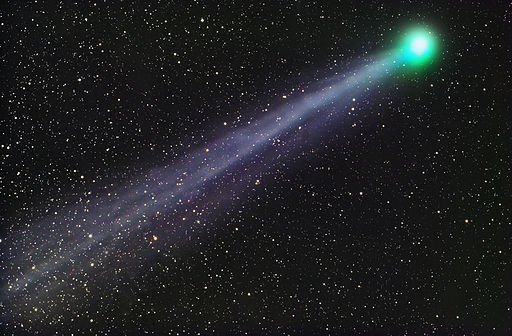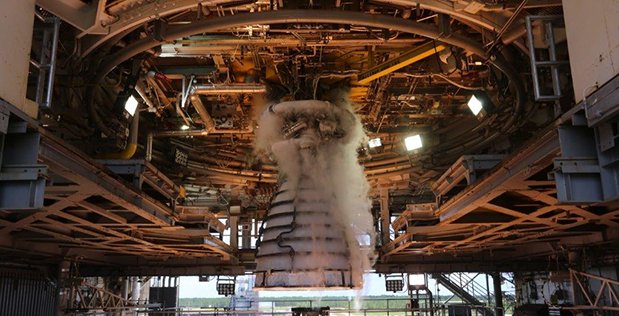DARPA’s Experimental Spaceplane (XSP) Advances Toward Its Goal For Rapid Turnaround
Experimental Spaceplane Program Successfully Completes Engine Test Series

Ten successful AR-22 engine firings within 240 hours prove propulsion readiness for launch on demand with rapid turnaround
DARPA’s Experimental Spaceplane (XSP) advances toward its goal for rapid turnaround and on-demand launch with the completion of a test series that put the spaceplane’s AR-22 Experimental Spaceplane Main Engine through a rigorous campaign. In the two weeks preceding the campaign, the engine ran twice to establish initial performance characteristics and turnaround processes. Then, starting July 26, the engineering team successfully fired the engine 10 times in just under 240 hours. All firings lasted at least 100 seconds. The AR-22 engine is a variant of the RS-25, also known as the Space Shuttle Main Engine (SSME).
The 10x10 test series, with its sequence of 10 discrete, long-duration firings in rapid succession, is unprecedented for large hydrogen-fueled liquid rocket engines. The test is an early check for one of the Experimental Spaceplane program’s most critical subsystems required to achieve aircraft-like operations. This first-of-its-kind test series took place at NASA’s Stennis Space Center in Stennis, Mississippi.

“When it comes to space access, DARPA’s focus is on getting there quickly and inexpensively, to the specific orbit we want, at a time of our choosing,” said Fred Kennedy, director of DARPA’s Tactical Technology Office, which includes the Experimental Spaceplane program. “In the future, we foresee large constellations of small satellites, with an ongoing need for replenishment to replace old systems and demonstrate new, innovative capabilities. If successful, XSP will be a key part of that strategy.”
The RS-25 engine family has a history of more than one million seconds of runtime, demonstrating its maturity. This test series is the first time engineers had operated it in an aircraft-like fashion with such repetition. Achieving this level of performance required engineers to streamline the maintenance and turnaround procedures to only what was truly necessary. That meant, for example, understanding and running with the kind of natural wear-and-tear associated with aircraft engines, without compromising reliability, safety, or performance. After each run, the team analyzed myriad recorded data to assess the engine’s health. These rapid, yet accurate, assessments were made possible by decades of prior SSME data.
Another significant challenge of the series was rapidly drying the engine between tests. The propellants – liquid hydrogen and liquid oxygen – combine to create liquid water that accumulates internally. If the engine is chilled down and restarted with excessive internal water, damage could result. Typically, engineers have weeks to let an engine dry between tests, but to meet the demands of 24-hour turnaround, the team introduced new processes to cut the drying time first to eight hours and then down to six.
One ingredient in the test program's success was its use of a new main engine controller, originally developed for the RS-25 variant that will power NASA's Space Launch System rocket. The controller, designed around modern avionics standards, provided significant flexibility and advanced capabilities to the program. Such capabilities include being able to support new adaptive software to handle anomalies in the engine’s operation. A portion of the new software logic was deliberately exercised in the final test.
“With each successful milestone, we’re closer to the goal of driving down cost and time to space by an order of magnitude,” said Scott Wierzbanowski, DARPA program manager for the Experimental Spaceplane. “For instance, we’re targeting the ability to affordably turn the vehicle within a day. If successful, we will be able to launch payloads on demand, which will change the paradigm for how the nation uses space.”
The Experimental Spaceplane program is a public-private partnership between DARPA and Boeing. Boeing teamed with Aerojet Rocketdyne for the AR-22. The program is in the second of three phases, the final of which is a flight test targeted for early 2021. Highlights of the unmanned Experimental Spaceplane include:
- Automated flight termination and other technologies for autonomous flight and operations;
- Capability to deploy at least 3,000 pounds to low Earth orbit; and
- Design that accommodates different types of upper stages.
[Source: DARPA -/- Media Relations]
[Photo Credits: Photos and Video inserted by Openeyesopinion.com (credits embedded)]
###
Related Video Video: Engine for New DARPA Military Space Plane Aces Record-Breaking Test